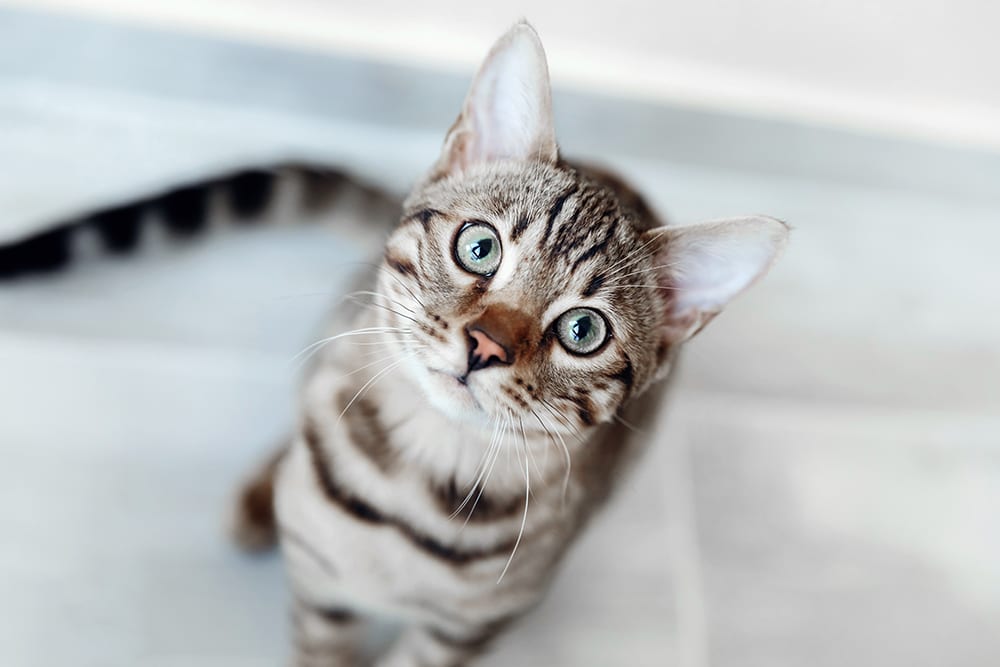Tooth resorption is a painful dental health issue for cats that often goes untreated because pet parents are unaware of the symptoms. So, today our Bartlett vets discuss the signs of tooth resorption in cats and how it is treated.
What is tooth resorption in cats?
Tooth resorption is a dental condition frequently seen in cats that is characterized by the erosion of the dentin (the hard tissue beneath a tooth's enamel) of one or more teeth. Tooth resorption untreated can cause irreparable damage. Over time, this serious condition can affect all of the components of your cat's mouth.
Cats develop tooth resorption when their bodies start breaking down and absorbing the structures that form their tooth. Generally, this condition starts in the enamel and makes its way to the tooth's center. Eventually, most of the tooth will be completely gone, only leaving a raised bump on the gums. The premolars in the lower jaw (generally the third premolars) are the teeth that are most often affected.
Occasionally, this condition can make a hole in the middle of a cat's tooth, which could look like your cat has a rotten tooth, or a cavity. However, the difference between tooth resorption and cavities is that cavities are the result of bacteria, and resorption is caused by the body's own biological process. Cavities are also fairly rare in cats, so if you see a hole in your cat's tooth that looks like a cavity, it is most likely tooth resorption.
Types of Feline Tooth Resorption
There are two types of tooth resorption that cats can develop. The type your cat has will be determined by the way the tooth appears on the radiograph (X-ray) your vet takes to diagnose this condition. When a veterinarian takes a radiograph of a normal tooth it should show the tooth root with a thin dark outline surrounding it, that separates the root from the bone. The dark outline represents the periodontal ligament, which is a normal anatomic element that connects the bone and the root.
Here are the two types of tooth resorption in cats:
Cat Tooth Resorption - Type 1
When cats have type 1 tooth resorption, it means the tooth's crown is damaged, but on the radiograph, the root looks normal and the periodontal ligament can be easily recognized.
Cat Tooth Resorption - Type 2
Also referred to as replacement resorption, this is where the root looks like it is disintegrating, making it hard to differentiate from the bone on the radiograph.
How can I tell if my cat is suffering from tooth resorption?
While tooth resorption can be very painful for cats, it can be hard to recognize because our feline companions are very good at masking their pain. This makes it very important to be able to recognize the signs and behaviors detailed below:
- Increased Salivation
- Difficulty Eating
- Oral Bleeding
- Behavioral Changes
How are cats treated for tooth resorption?
If you think your cat may have tooth resorption you should call your vet as quickly as possible. If your veterinarian suspects your feline friend has this condition, they will conduct radiographs and a clinical screening while your cat is under anesthesia. Your vet may also perform a complete dental screening. Without these tests, your cat's tooth resorption will go undiagnosed and continue to get worse, causing your kitty a great deal of pain. Since this condition can be hard for cat owners to recognize, it is important to bring your feline friend to the vet for routine dental exams and cleanings to give your vet the chance to detect this condition in its earliest forms.
If your vet diagnoses your cat with type 1 tooth resorption, they will most likely need to extract the root and crown. If your kitty has type 2 tooth resorption, your vet may need to conduct a crown amputation with intentional root retention.
Note: The advice provided in this post is intended for informational purposes and does not constitute medical advice regarding pets. For an accurate diagnosis of your pet's condition, please make an appointment with your vet.
Our Bartlett vets have experience diagnosing and treating tooth resorption and other dental problems in cats. Contact Hillcrest Animal Hospital today to book an examination for your kitty.

Looking for a vet in Memphis?
We're always accepting new patients, so contact our veterinary hospital today to book your pet's first appointment.Related Articles View All
Tips to Make Traveling With a Cat Easier
Planning a trip with your favorite feline friend? Today, we share tips to help make the journey an enjoyable experience for both you and your cat.
How to Treat Constipation in Cats
Constipation isn't just uncomfortable for your cat, it could be a sign of a serious health problem. What causes constipation in cats? What are the signs? Can it be treated at home? Read on to find out.
A Pet Parent's Guide to Gingivitis in Cats
Is your cat losing weight or refusing to eat? It could be a sign of dental health problems. One common dental issue in cats is an inflammation of the gums called gingivitis. In today's post, you will learn about the signs and how cat gingivitis can be treated.
Your Guide to Raising a Puppy & Kitten Together
Looking for a furry friend to welcome into your home? Maybe two fur babies would be even better? Our Bartlett vets explore the challenges and rewards of raising a puppy and kitten in the same household.
